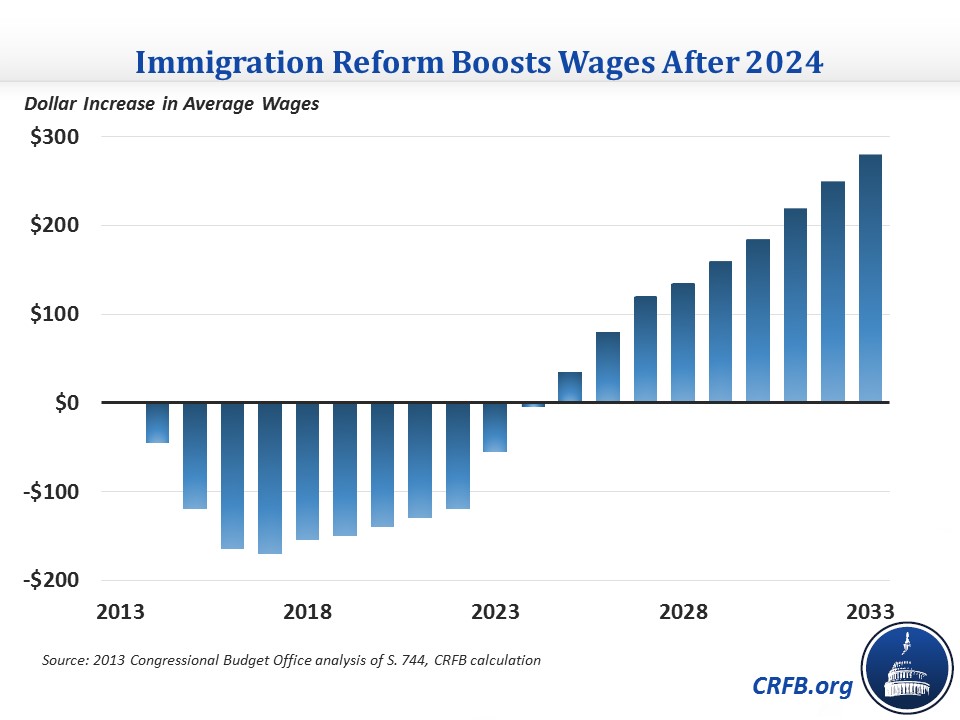Will Immigration Reform Increase Annual Wages by $250?
One claim made by former Gov. Martin O' Malley (D-MD) during last night’s debate is that immigration reform will "make wages go up in America $250 for every year."

This number comes from a calculation done by the White House regarding the 2013 Senate immigration reform bill (S. 744). When the Congressional Budget Office (CBO) did an economic analysis of this legislation, they estimated that the average real wage of the entire labor force would be 0.5 percent higher in 2033, 20 years in the future at the time of the analysis. The White House then calculated what this would be in dollar terms.
However, the effect on immigration reform on average wages is not uniform in every year. Immigration reform increases the labor supply in the United States. In the short and medium term, it would decrease average wages, as the ratio of capital to labor would decrease slightly, depressing wages by as much as 0.3 percent in 2017 and about 0.1 percent in 2023. Increased productivity would then result in wages being higher than they otherwise would be in 2025 and beyond. The analysis implies that wage increases would be higher than the 2033 effect in future years, which would mean the wage increase would be larger than $250 beyond 2033.

CBO does specify in their report on the legislation that the short-term reduction in wages does not necessarily mean lower wages for current residents:
The estimated reductions in average wages and per capita GNP for much of the next two decades do not necessarily imply that current U.S. residents would be worse off, on average, under the legislation than they would be under current law. Both of those figures represent differences between the averages for all U.S. residents under the legislation—including both the people who would be residents under current law and the additional people who would come to the country under the legislation.


